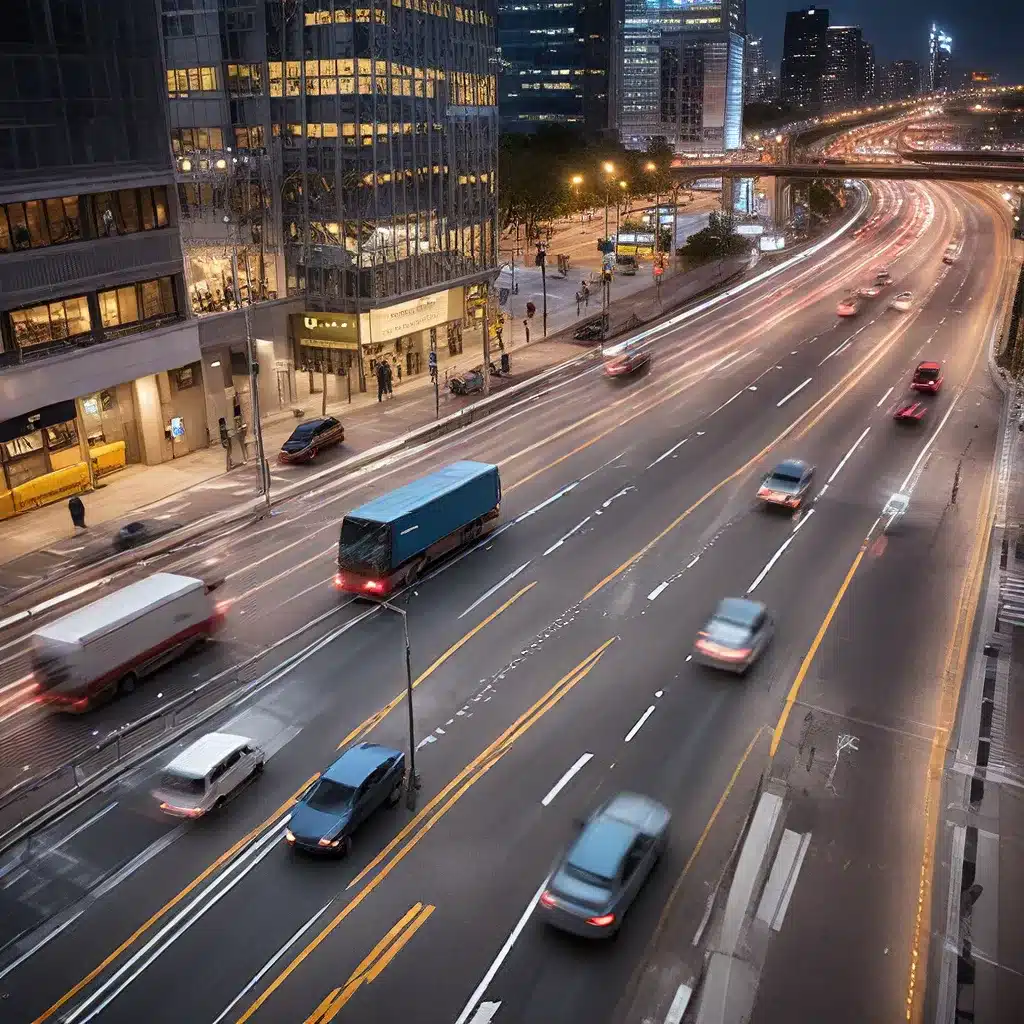
In the rapidly evolving landscape of transportation, sensor networks and Internet of Things (IoT) technologies are playing a transformative role. These innovative solutions are reshaping the way we move people and goods, ushering in a new era of intelligent transportation systems (ITS) that promise enhanced mobility, logistics, and safety.
The Rise of Sensor Networks in Transportation
At the heart of this revolution lies the sensor network, a web of interconnected devices capable of collecting, processing, and transmitting data in real-time. These sensor networks, integrated into the transportation infrastructure, are unlocking unprecedented insights and capabilities.
Fiber optic technology, a key enabler of high-speed and reliable communication, is revolutionizing the transportation industry. By establishing secure and connected networks, sensor data can be transmitted with low latency and high bandwidth, ensuring seamless integration and optimal operational efficiency.
Smart Highways and Rail Systems
One of the most visible applications of sensor networks in transportation is the development of smart highways. These intelligent roadways are equipped with a variety of sensors, including cameras, traffic monitors, and environmental sensors, all connected through a robust fiber optic backbone. This network of sensors provides real-time data on traffic patterns, road conditions, and environmental factors, empowering transportation authorities to make informed decisions and optimize traffic flow.
Similarly, smart rail systems are revolutionizing the railway industry. Fiber optic sensors embedded in the infrastructure, such as tracks, bridges, and tunnels, continuously monitor structural integrity, temperature, and strain, enabling proactive maintenance and enhancing safety. Positive train control (PTC) systems, powered by sensor networks and high-speed communication, automatically control train speed and ensure compliance with speed limits, signal indications, and track conditions, reducing the risk of collisions and improving overall operational efficiency.
Enhancing Mobility and Logistics
The integration of sensor networks in transportation extends beyond infrastructure and into the realm of mobility and logistics. Connected vehicles, equipped with a variety of sensors, can communicate with the transportation network, sharing real-time data on their location, speed, and driving conditions. This vehicle-to-infrastructure (V2I) and vehicle-to-vehicle (V2V) communication enables adaptive traffic management, allowing for dynamic route optimization, reduced congestion, and improved fuel efficiency.
In the logistics domain, sensor networks are transforming supply chain management. Cargo tracking systems, utilizing sensors and IoT technology, provide visibility into the location, condition, and environmental factors affecting shipments. This enhanced supply chain visibility enables logistics providers to make more informed decisions, optimize delivery routes, and ensure the integrity of transported goods.
Ensuring Security and Energy Efficiency
As sensor networks become increasingly ubiquitous in transportation, the issue of security has become a crucial concern. Fiber optic technology inherently offers enhanced data security, as the signals do not emit electrical fields that could be intercepted, reducing the risk of cyber attacks and ensuring the integrity of sensitive transportation data.
Furthermore, the integration of sensor networks in transportation systems is driving advancements in energy management. Environmental sensors can monitor factors such as energy consumption, emissions, and renewable energy generation, enabling transportation authorities to make informed decisions about energy-efficient operations and the integration of sustainable energy sources.
The Future of Sensor Networks in Transportation
As the transportation industry continues to evolve, sensor networks and IoT technologies will play an ever-increasing role in shaping the future of mobility, logistics, and safety. The integration of artificial intelligence (AI) and machine learning (ML) into these sensor-driven systems will unlock even greater insights, enabling predictive maintenance, autonomous vehicle coordination, and optimized multimodal transportation solutions.
Sensor-Networks.org is at the forefront of this technological revolution, providing a hub for industry professionals, researchers, and enthusiasts to explore the latest advancements, share knowledge, and collaborate on innovative solutions that will define the future of transportation.
By harnessing the power of sensor networks, the transportation industry is poised to undergo a profound transformation, ushering in a new era of intelligent mobility, efficient logistics, and enhanced safety for all. The future of transportation is here, and it is driven by the interconnected web of sensors, data, and smart technologies that are reshaping the way we move.